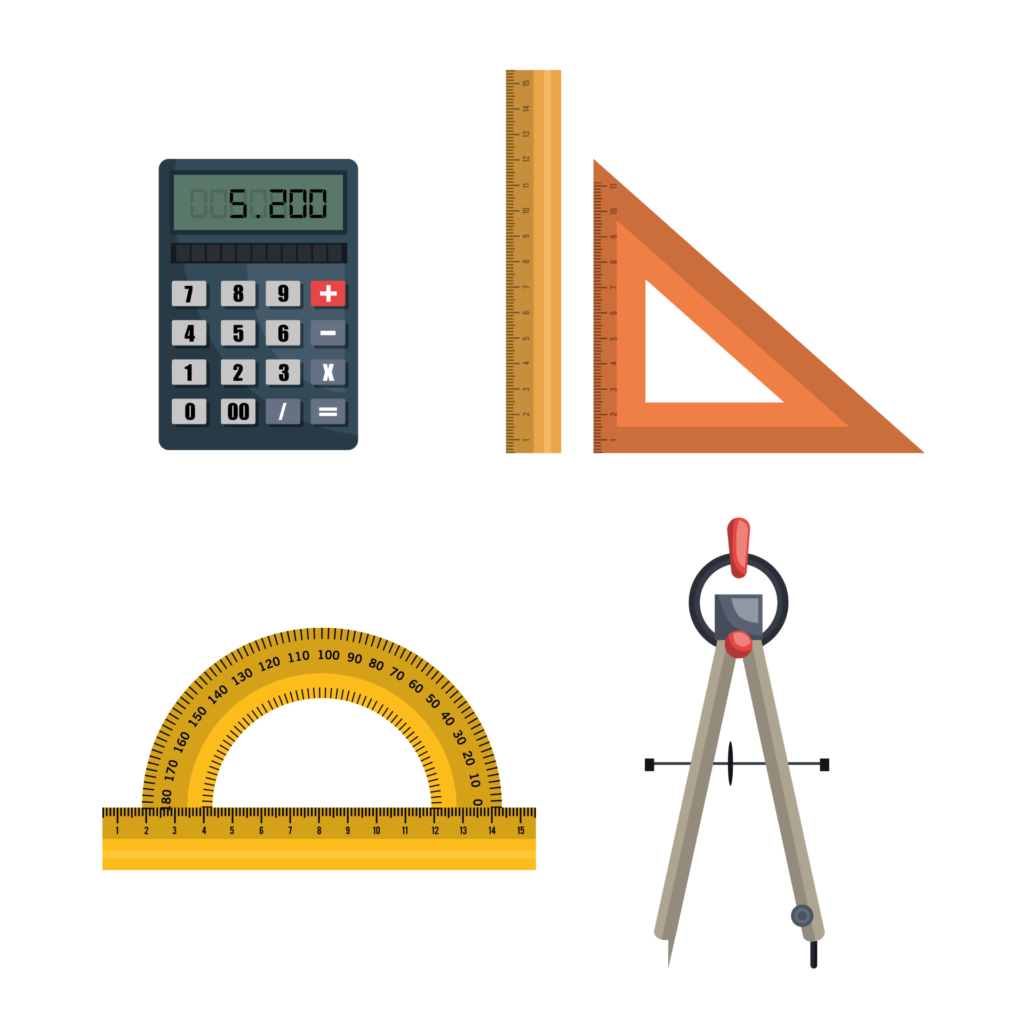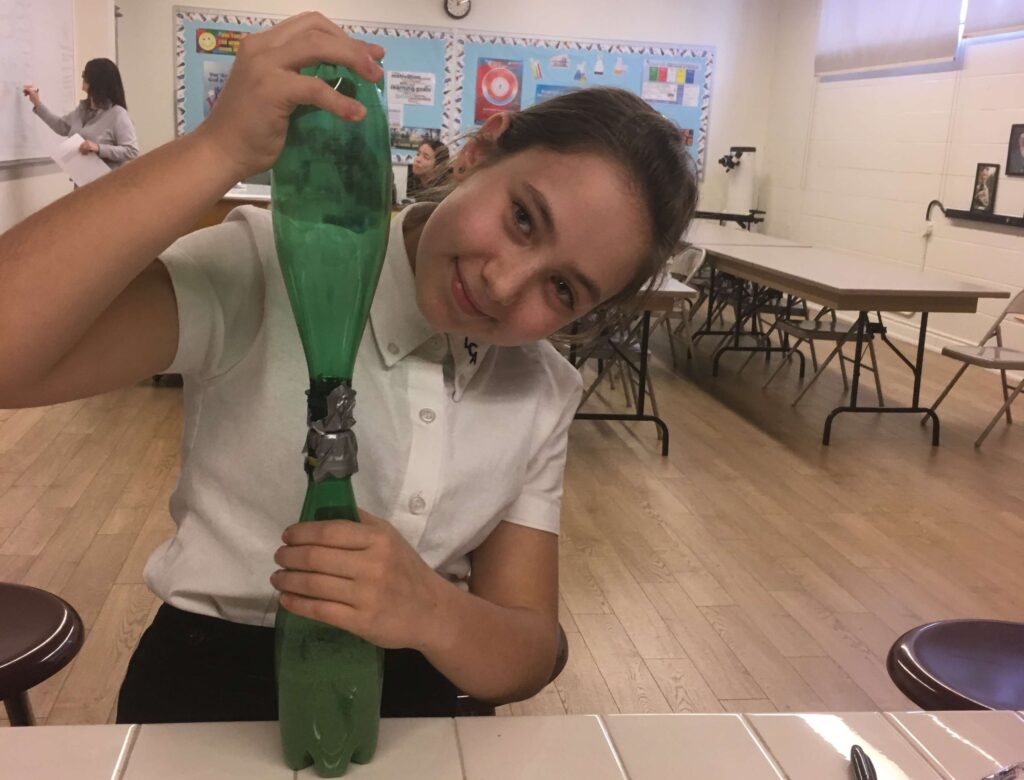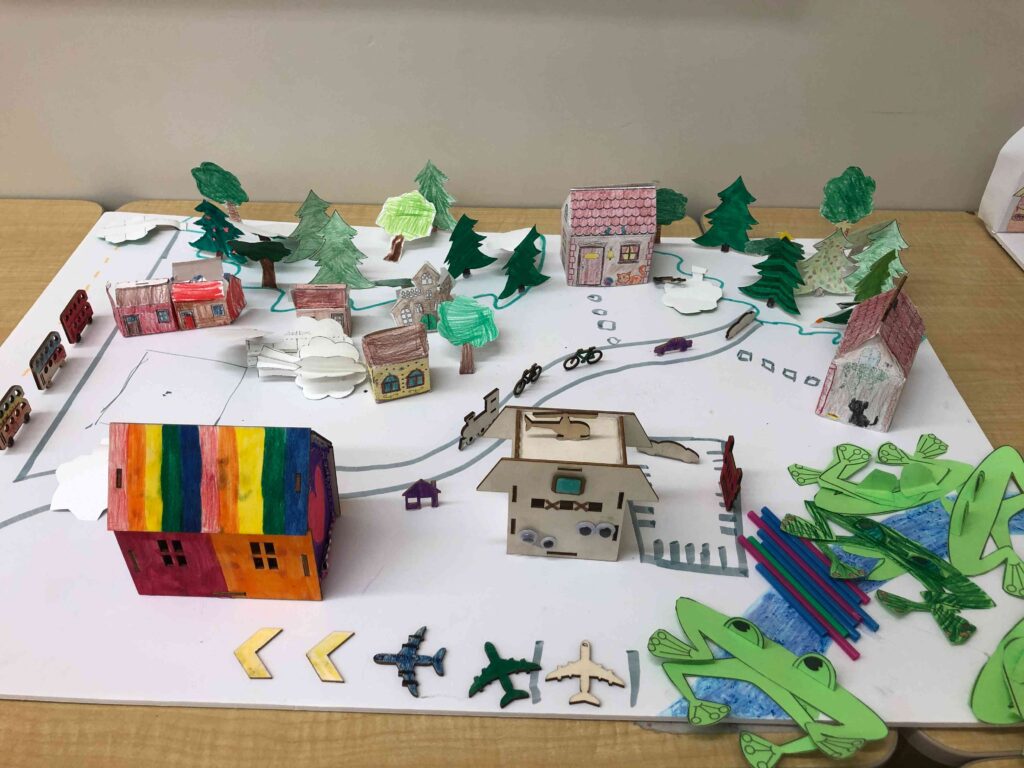

In the realm of dynamic art, where Science, Technology, Engineering, Art, and Mathematics (STEAM) intersect, the concept of artwork in motion has been extensively explored, notably by the renowned artist nicknamed “Agam”.
He pioneered an innovative approach where the artwork transforms based on the viewer’s position, thus creating an interactive visual experience. In our workshop, we harness this idea to craft our own dual artwork, presenting two distinct perspectives from two juxtaposed drawings.
An art piece using string or yarn, what a great idea! Let’s create a star, an octagon or other shapes to decorate while learning about geometry and symmetry!

Let’s dive into a colourful world where geometry, symmetry, and art come together to create magical patterns with multi-coloured string! Using the magic of shapes and symmetries, we weave the string around a central point for dazzling creations. This hands-on adventure will push us to explore the secrets of shapes and patterns, while unleashing our creativity and discovering the connections between art and mathematics.
Paper is flat, so how do turn it into a decorative 3D ball? Using geometry, a bit of math and our artistic talents, we can make original decorations for a garland, a crown or put in a basket. Let’s be creative and make decorative 3D pieces of different shapes and sizes.

In this workshop, we explore the transformation of flat paper into three-dimensional decorations for crowns, necklaces, or baskets. The activity involves creating paper balls, ranging from Christmas ornaments to artistic embellishments. By unleashing creativity, participants produce balls of various shapes, sizes, and colors. This experience encourages the exploration of geometric concepts and material properties while stimulating artistic imagination. Participants thus develop their understanding of spatial dimensions and manual dexterity.
A circle is symmetrical along all its axes, the square is symmetrical along 4 axes, the rectangle along 2, what about other geometrical or artistic shapes? Let’s explore this concept as well as the relationship between 2D shapes and their 3D equivalent in a geometrical experience.

Who will build the highest, lightest, biggest most solid structure? With a little creativity, basic materials, and teamwork, we will build a table, a boat, a tower, shelves or something else… Whatever today’s challenge is, we are ready!

A typical STEM construction challenge engages participants in designing and building a structure using principles of science, technology, engineering, and mathematics. In our challenges, students are tasked with solving a problem or achieving a specific goal within given constraints. They begin by brainstorming ideas, then move on to planning and designing their structure using mathematical and scientific concepts. During the construction phase, they apply engineering principles to create a stable and functional design. Finally, they test their structure to assess its performance and make any necessary adjustments. This hands-on challenge promotes critical thinking, problem-solving, and teamwork skills while fostering creativity and innovation.
Measuring time with water, sand or by observing a shadow? Yes, it is possible! Together, we will build instruments to measure time like people did thousands of years ago and try to calibrate it!

Let’s explore the ancient art of time measurement through fascinating and ancestral methods. By going back in time, we’ll uncover the origins of time measurement and its evolution over the centuries. Let’s delve into the history of timekeeping instruments, from sundials to fluid clepsydras. Through practical experiments, we’ll craft our own clepsydras or hourglass to capture the passage of time as they did in antiquity.
Thermometer, barometer, hygrometer, heliograph, anemometer… These instruments help meteorologists predict tomorrow’s weather; it is important to choose your clothes but more importantly, for pilots, sailors, farmers and all those who work outside. Today, let’s be meteorologists and let’s make an anemometre!

Thermometer, barometer, hygrometer, heliograph, anemometer… These instruments help meteorologists predict tomorrow’s weather; it is important to choose your clothes but more importantly, for pilots, sailors, farmers, and all those who work outside. Today, let’s make an anemometer that will allow us to measure the required data so we can calculate the wind speed. A bit of math and a bit of science…
Where would you like to live? In a big city? A small village? In the countryside? By the sea? Here is your chance to create your own 3D city, with houses, buildings, streets and you can add the scenery that you want. But, let’s not get carried away; let’s start with one or two 3D houses and grow our space one house at a time!

What would be your ideal living place? In a bustling city? A picturesque village? Or perhaps in the countryside, by the water? Here’s your chance to design your own 3D city, complete with houses, skyscrapers, streets, and even the landscape of your dreams, using the principle of equivalence between 2D drawings and 3D shapes! But let’s not aim too big… let’s start with just one or two 3D houses, a street, and expand our city gradually!
We can’t go to an amusement park every day, but we can make our own roller coaster and play with it when we want!

Welcome to our roller coaster workshop! Students embark on an exciting adventure where physics comes to life. Using a template, they create their own roller coasters and explore concepts like gravity, friction, and kinetics. They design and attempt to implement ingenious tracks with loops, fast drops, and tight turns. Emphasis is also placed on creativity and design, allowing students to customize their roller coasters with unique themes and decorative elements. It’s an exhilarating experience where science and imagination come together to create thrilling moments!